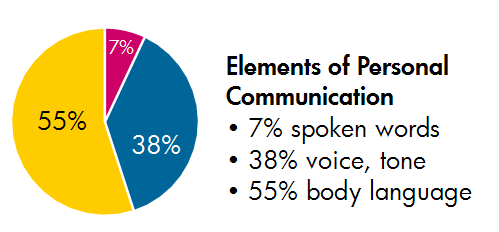Benefits and Challenges of Working Remotely

Share
Introduction
Remote work has also increased and is now growing faster. You can work from home for any company from anywhere.
Remote work has increased by 140% since 2005, almost 10 times faster than the rest of the workforce. In fact, according to Global Workplace Analytics, more than 4.3 million employees (3.2% of the workforce) now work at least half the time from home.
We at Job Vacancy Result are working tirelessly to bridge the gap between job seekers and job recruiters. Though remote work is the need of the hour for various companies there are companies that are still hiring.
Many companies offer the remote working opportunity to maintain work-life balance but there are companies which fear of it being misused.
Advantages of Remote Work
The growth of remote work may be inevitable and you want to take advantage. Allowing work from from will benefit not only your employees but you, as a manager and the entire organization.
Not only do remote workers enjoy what they do most, but remote work is generally less stressful, and as a result, they are more willing to put in extra hours. However, this is one of the potential benefits of remote work for employees, managers, and companies.
The Executive Education Department of the MIT Sloan School of Management reported in their Quality of Life survey that when an employee had a supervisor open to flexible (i.e. partially remote) work, the employee was more likely to stay with the company.
The results speak for themselves:
90% reported that their family and personal life improved.
85% said their stress was reduced.
80% said their morale and engagement improved.
62% felt more trustworthy and respectful.
93% believe that collaboration is better than the previous one.
Along with personal improvements on the employee side, the possibility of working remotely has resulted in better morale, engagement, trust, retention, and cooperation.
Remote work is more than just the advancement of technology, it also has the potential to help the way we operate, operate, and operate. Technology is the basis of success nowadays.
Job Vacancy Result has integrated AIML technology and is a research-backed cutting-edge HR Tech platform that provides a one-stop solution for businesses across domains to hire, align & engage in creating high-performing and skilled teams.
It creates a comfortable platform with AIML based job recommendations, customized tests for candidates based on their skills and experiences, geo-searching, video job descriptions along with interviews from experienced professionals working in top organizations, identifies the overall 360 degrees potential of candidates and recommending them the jobs which increase their chances of selection.
JVR offers our users a smoother recruiting process for the HRs as well as the candidates. From the HR’s eye for recruitment, our platform delivers voice-based resumes, resume sourcing, recruitment tests, candidate hiring recommendations, online KYC, documentation wallet, IVRS facility, and other end-to-end facilities.
Challenges of managing remote employees
While there are great benefits to allowing remote work in your team, there is one problem: Most entrepreneurs and managers are still unaware of the challenges of managing remote employees.
Remote work differs in some big ways from the simple work structure. Despite the big benefits, there are also new and unique challenges in hiring and managing remote employees, something managers never see coming.
1. Loneliness and loneliness
Without a doubt, this is one of the top three challenges that remote workers face. Loneliness and loneliness are also harmful to humans. Chronic loneliness can lead to severe cases of anxiety and depression. As their manager, learn about this. Do your best to socialize with the rest of the team whenever possible. Also, encourage them to get out of the house to go to a coffee shop or co-working space, or to events or meetups in their area.
2. Communication problems due to lack of non-verbal cues
Communication managing remote employees is an obvious challenge, but some of the communication-related challenges are not so obvious. Yes, you can quickly lose some conversation and workplace chats in that hallway, but it goes deeper than that.
When face-to-face communication is inadequate, it can be difficult to discern intent in the messages between you and your employee. It's hard to understand when the message is just text, or you don't even know other office workers.
Most popular tools used for communication and collaboration during remote work are:

- Skype
It is not remotely possible to communicate without Skype (pun unintended!). Skype is basically a video messenger tool and allows you to make free voice and video calls to anyone in the world. Skype Virtual Stand-ups work well for quick status updates, but now includes screen sharing and capture options, while the paid version is for dialing phone numbers. What's not to like?
- Zoom
Zoom provides a consistent organizational experience and includes conference rooms, chats, webinars, and conferencing options. In light of the recent pandemic, more and more offices are working online, which indicates a greater need for team collaboration. When it comes to talking, you can mute and unmute, share screens and even record sessions, and download them to your PC for your viewing and listening pleasure!
- Same page
Samepage is a collaborative software and feature teams, sub-team, private chat, tasks, and file-sharing list, exchange notes with its teams in world offices. You can enable Samepage for desktop and mobile notifications, and make sure you always give information when a colleague, line manager, or teacher wants to run something by you. It is collaborative software that runs conferences, manages projects, and coordinates events. Great for small distribution teams!
- Slack
Slack is the first communication tool to go for teams of any size. This minimizes distraction by allowing you to create unique channels depending on the number and type of participants. Slack has its own advantages. It tags team members and allows easy file uploads and sharing so that multiple users can view and work on a single document in real-time.
3. Feeling left out
Company celebrations, consideration for promotion, and your opinion in general - are far more common on remote employees than on-site.
When you work remotely, you miss out on so many opportunities to connect with your co-workers and managers, small - rushing to one another in the office - big - Friday happy hours a block from the office.
I hope you have got insights into the pros and cons of remote working. The best part about it is that you can experiment with a lot of other things along with remote working. So go ahead on discovering on your own.
We at JVR, are recruiting candidates for Jobs in Delhi, Chennai, Mumbai, Hyderabad, Bangalore, etc.
Let me now brief you about what challenges do employees face when working remotely. This is something many are facing in the current pandemic crisis.
